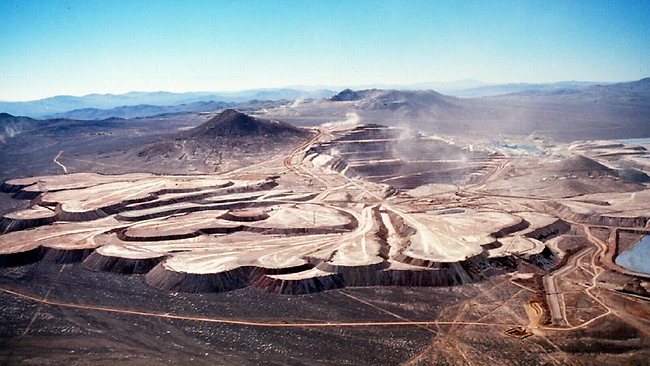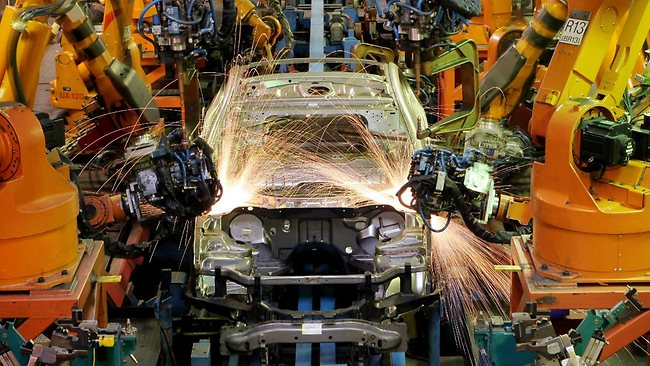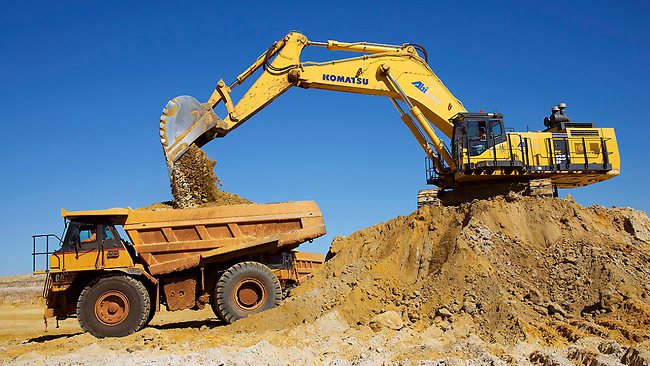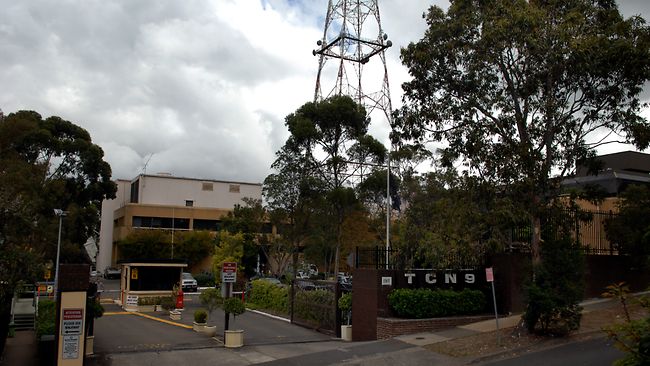Companies
-

The Resource Service Companies are Contractors
David Buckland
November 14, 2012
The contractual nature of the resource service sector was highlighted with Emeco’s latest earnings downgrade. Their Australian fleet utilisation has declined from 91% in the 6 months to June 2012 to the current 66%. A combination of weaker demand, contract revisions, and contract non-remewals was to blame. Commentary particularly reflected lost contracts from the iron ore and coal industries. Expectations for the Company’s revenue line has been cut by 20% to around $550m for each of Fiscal 2013 and 2014, while net earnings have been reduced by around one-third to $51m and $58m, respectively. At the current share price of $0.51, some brokers are calling Emeco a buy as it is now selling on a prospective PE of 6X and a one-third discount to its net tangible asset backing of $0.76 per share.
Nevertheless, we remain cautious on the outlook for the resource service companies generally and believe investors should be wary of Emeco’s forecast $443m net indebtedness.
by David Buckland Posted in Companies, Energy / Resources, Insightful Insights.
-

Changes in the car market – enduring or short-term?
Roger Montgomery
November 12, 2012
AMA, MXI, AHE and ARP share prices are all booming on the back of surging demand in an under supplied car market, causing a shortage of capacity which is driving up margins for the sector’s operators.
You can read one of our recent post on the subject here.
Naturally we have been drawn to the operators in the sector on the back of this capacity shortage. The ability to charge higher prices in a capacity-constrained environment is great if they are enduring, but I must ask, is the entire sector in a little bubble? A bubble in profitability and short-term market growth?
continue…by Roger Montgomery Posted in Companies, Insightful Insights, Manufacturing.
-

MEDIA
What are David Buckland’s insights into Small Cap Mining stocks?
Roger Montgomery
November 6, 2012
Do Imdex (IMD), Sundance Resources (SDL), Woodside (WPL), Axiom Mining (AVQ), Seven West Media (SWM), Silverlake Resources (SLR), Mesoblast (MSB), Titan Energy (TTE) , Metcash (MTS), Emeco (EHL) or Magellan (MFG) achieve the coveted A1 grade? Watch this edition of Sky Business’ Your Money Your Call 6 November 2012 program now to find out, and also discover how David approaches investing in small cap mining stocks. Watch here.
by Roger Montgomery Posted in Companies, Insightful Insights, Market Valuation, TV Appearances.
-
Important enhancements to Skaffold
Roger Montgomery
November 5, 2012
If like me, you are a Skaffold member, you will have noticed something dramatic has happened when you logged in recently.
(If you are not a member, what are you waiting for?)
Quietly and without much fanfare, Skaffold just got a whole lot more valuable to me.
I’d like to share with you – just this once – some of the information that Skaffold members received recently and tell you a bit about the change.
continue…by Roger Montgomery Posted in Companies, Skaffold.
- 1 Comments
- save this article
- POSTED IN Companies, Skaffold
-

MEDIA
It’s a Tasty,Tempting Mix
Roger Montgomery
November 1, 2012
In his Money Magazine November 2012 article, Roger highlights the ongoing competitive advantage of Breville Group (BRG). Read here.
by Roger Montgomery Posted in Companies, Market Valuation, On the Internet.
- save this article
- POSTED IN Companies, Market Valuation, On the Internet
-
Where is the value? Let Skaffold keep you posted!
Roger Montgomery
October 22, 2012
Last week on 2GB I didn’t speak to Ross Greenwood as I normally do. He was off in New York for Channel Nine. Instead I had a terrific chat with my friend and former fund manager Matthew Kidman.
As usual we didn’t have a great deal of time but I asked Matthew whether he was seeing much value and his reply was telling. Like me, it seems to Matthew that value was getting thin on the ground, particularly among the higher quality companies.
There is still a few pockets of value and we named a few stocks. Matthew mentioned that he also predicted that the market would now strengthen and stocks that are fairly valued may continue to rally well beyond fair value.
I am less able to predict stocks and their short term price direction. To reduce risk what we do is simply analyse those companies that come into value as their prices, values and quality scores change.
by Roger Montgomery Posted in Companies, Insightful Insights, Intrinsic Value, Skaffold.
-

MEDIA
What is Russell Muldoon’s outlook on Commodities?
Roger Montgomery
October 17, 2012
Do CSL (CSL, Silverlake (SLR), FKP (FKPDA), Breville Group (BRG), Codan (CDA), QBE Insurance (QBE), NAB (NAB), Wesptac (WBC), AMP (AMP), ALS (ALQ), Prima (PRR), Rio Tinto (RIO), Lynas (LYC), or Mesoblast (MSB) achieve the coveted A1 grade? Watch this edition of Sky Business’ Your Money Your Call 17 October 2012 program now to find out, and also learn Russell’s insights into the commodities sector. Watch here.
by Roger Montgomery Posted in Companies, Financial Services, Insightful Insights, Intrinsic Value, TV Appearances.
-

Back to the Future
Roger Montgomery
October 17, 2012
By Russell Muldoon and Roger Montgomery
Growing up in inner Melbourne in the 1970’s I cannot tell you how many post hockey-game lunches my mother trotted out on the ‘Breville’. The original scissor action Breville Sandwich Toaster was released in 1974. It sold 400,000 in its first year and reached 10% of Australian households. It was quickly improved in 1976 with the release of the Breville Snack’n’Sandwich Toaster (pictured) which was the first sandwich toaster to cut and seal sandwiches in half. It was a revelation and became an icon of the appliance world – we could eat a sandwich while riding our BMX’s without the contents of the sandwich spilling everywhere. And Mum was happy because a healthy and warm lunch was done in a few minutes and while it was being made, she could get the carpet sweeper out and do a quick run up and down the hallway or throw a slipper at any kid that was mucking up because they were hungry!
by Roger Montgomery Posted in Companies, Manufacturing.
- 6 Comments
- save this article
- POSTED IN Companies, Manufacturing
-

Iluka confirms all our fears…
Roger Montgomery
October 16, 2012
Didn’t think a free blog could be a valuable use of your time?
Back on 13 July 2012 (read here), we warned that Iluka Resources announced their 2012-2014 Key Physical and Financial Guidance previously released in February 2012 was “now redundant and as such no longer applicable”. Management had said volumes for the December 2012 half-year were indicating “lower ordering patterns or an unwillingness to commit to volumes except on an “as needed” basis”.
As with other miners described here at the blog over the last year, the boom appeared to be over and reports were confirming our earlier appraisal of the likely impact from a China – led slowdown. Iluka’s exposure is both direct and indirect and the grim conditions were confirmed yesterday with the release of the Iuka Resources September Quarterly report. Combined sales volumes of zircon, rutile, synthetic rutile and ilmenite at 306,300 tonnes, were down 29% on the September Quarter 2011. Revenue at $225m was down an extraordinary 58% from $533m recorded in the September Quarter 2011. This means the average selling price for Iluka’s mineral sands declined by 41% year on year. In response, the Iluka share price fell 6.6% to $9.00 and is back to trading where it was in February 2011. Essential reading indeed.
by Roger Montgomery Posted in Companies, Insightful Insights.
- 3 Comments
- save this article
- POSTED IN Companies, Insightful Insights
-

When genius fails?
Roger Montgomery
October 15, 2012
CVC has wrestled with its ownership of Nine ever since it bought the network from James Packer’s PBL Media for $5.3 billion in 2007. And now CVC’s man Adrian McKenzie has quit the nine board and Goldman Sachs as swapped debt for equity.
Equity owners are last in line and its a salient lesson for investors who must always remember that there is a very high risk owning businesses. In this environment of low interest rates its easy to value companies on equally low discount rates to try and produce a valuation close to the current price to justify a purchase. This is the basic lesson for CVC.
Even in an environment such as this we’d be using 10%, 11% even 13% required returns and walking away from anything that is not cheap enough.
With money burning holes in pockets and fees based on the employment of capital the temptation to bit off more than one can chew is ever present.
The late Kerry Packer taught the world a valuable lesson when he said ‘You only get one Alan Bond’. And James was obviously paying attention.
by Roger Montgomery Posted in Companies, Media Companies.
- 4 Comments
- save this article
- POSTED IN Companies, Media Companies